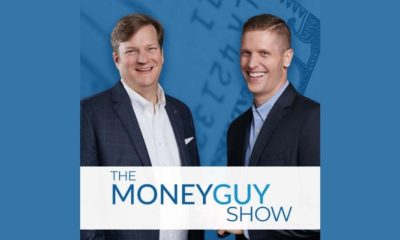Investment
Building A Crash Proof Investment Portfolio

Markets are reaching and maintaining new heights despite decreased involvement and trading volume.
Because of this, investors are understandably apprehensive about what the rest of 2016 – and the foreseeable future – has in store.
This comes as no surprise, considering the plethora of economic and political challenges facing the United States and many other parts of the world.
Investing in such times is a dangerous gamble.
Equally, it is just as frustrating for investors to cash out their investments while there is still potential for the market to soar a few hundred points.
Investors must remain level-headed in such a fluctuating market and arm themselves with the knowledge they need to stay invested while also taking the lowest amount of risk.
In this article, we’ll examine some of the ways investors can maximize returns in a weak market, mainly using the Strategic Volatility Strategy.

Risk and Volatility
One method of assessing risk when it comes to investing is by using the standard deviation of returns.
The only problem with this approach is that the exact rate of volatility can never be determined for certain; it’s only an estimate.
The sample standard deviation is the best way to estimate asset volatility.
There is, however, an issue with using standard deviation to determine risk.
When it comes to standard deviation, both the upside risk and the downside risk are treated equally.
By investing, you risk watching your investment double, but you also risk seeing it cut in half.
Essentially, standard deviation treats these risks the same, even though investors consider downside risk far more costly.
To combat this, try using semi-deviation.
It is essentially the same process, apart from the fact that semi-deviation only deals with negative returns.
Semi-deviation is what forms the basis for the Sortino Ratio.
Unlike the Sharpe Ratio, the Sortino Ratio utilizes semi-deviation to calculate risk.
If you want to minimize downside risk, apply the Sortino Ratio to your investment portfolio.
[ms_divider style=”normal” align=”left” width=”100%” margin_top=”30″ margin_bottom=”30″ border_size=”5″ border_color=”#f2f2f2″ icon=”” class=”” id=””][/ms_divider]
[ms_featurebox style=”4″ title_font_size=”18″ title_color=”#2b2b2b” icon_circle=”no” icon_size=”46″ title=”Recommended Link” icon=”” alignment=”left” icon_animation_type=”” icon_color=”” icon_background_color=”” icon_border_color=”” icon_border_width=”0″ flip_icon=”none” spinning_icon=”no” icon_image=”” icon_image_width=”0″ icon_image_height=”” link_url=”https://offers.thecapitalist.com/p/58-billion-stock-steal/index” link_target=”_blank” link_text=”Click Here To Find Out What It Is…” link_color=”#4885bf” content_color=”” content_box_background_color=”” class=”” id=””]This one stock is quietly earning 100s of percent in the gold bull market. It's already up 294% [/ms_featurebox]
[ms_divider style=”normal” align=”left” width=”100%” margin_top=”30″ margin_bottom=”30″ border_size=”5″ border_color=”#f2f2f2″ icon=”” class=”” id=””][/ms_divider]
Correlation Risk
Correlation risk is the likelihood of loss due to a discrepancy between the expected and actual correlation between assets.
Correlation risks are often built-in, and they aren’t usually a problem unless they are unintentional.
Here are some tips on how to handle problematic correlation risk:
Identify any unwanted associations in your portfolio.
- Adjust your holding to help eliminate the risk.
- Quantify dependencies by using linear regression analysis and the Strategic Volatility Strategy. (See table below.)

Ideally, this strategy will create consistent, positive returns independent of market changes.
Tail Risk
Tail risk can be measured by using skewness or kurtosis.
Consider the distributions below:

Traditionally, the left skew would be associated with negative returns.
The right distribution, however, is also “heavy-tailed” – but in this instance, the tail risk deals with positive returns, making it risk investors are willing to take.
Kurtosis is a more efficient means of measuring tail risk.
The following distribution for the Strategic Volatility Strategy has a positive skew and is, therefore, likely to result in positive returns.

Tail risk can also be assessed by observing how the strategy performs during consistently fluctuating or extreme market conditions.
Positive Convexity
Positive convexity is merely financial jargon for what we’ve been discussing all along – maximizing positive returns in spite of changing market conditions.
Of course, this process is not as clear-cut as it may seem.
Reconstructing a portfolio that successfully safeguards against undesirable types of risk is time-consuming.
Striving for positive convexity is futile unless the investor includes leveraged ETFs.
In any case, let’s examine how it works when it comes to the Strategic Volatility Strategy:

The Sortino Ratio is incredibly efficient at higher than seven on average.
Meanwhile, the downside risk remains low at 1.36%.
Critical investors might posit that a 10% CAGR is quite small.
However, this particular investment carries a similar amount of risk as a government bond.
Even so, it yields several times more than a standard bond at the current interest rate.
Also, these results utilize a 2:1 Reg-T leverage.
There is a possibility of doubling the CAGR by boosting the leverage to 4:1.
Investors’ risk thresholds vary; they decide for themselves how much risk they are willing to apply to a certain portfolio.
Strategy leverage can be determined based on that threshold.
Conclusion
The current market is dismal and challenging for investors, but there are a few solutions.
Investors should construct successful portfolios that focus on:
- achieving high Sortino Ratios
- making little correlation risk
- striving for positive skew and convexity
With careful planning and experimentation, investors can build a portfolio that maximizes returns and minimizes risk.















